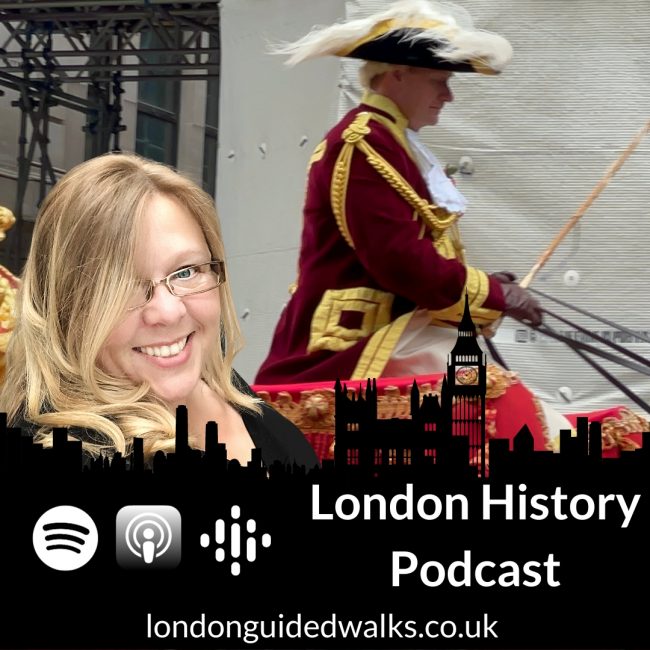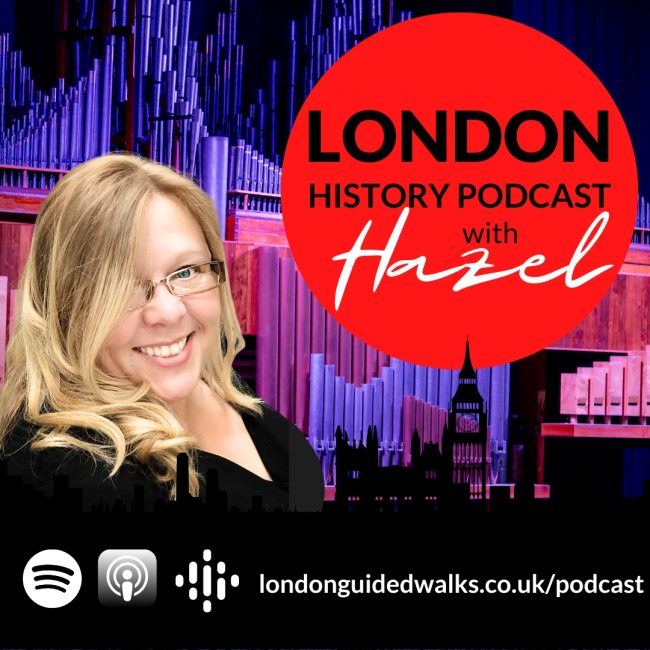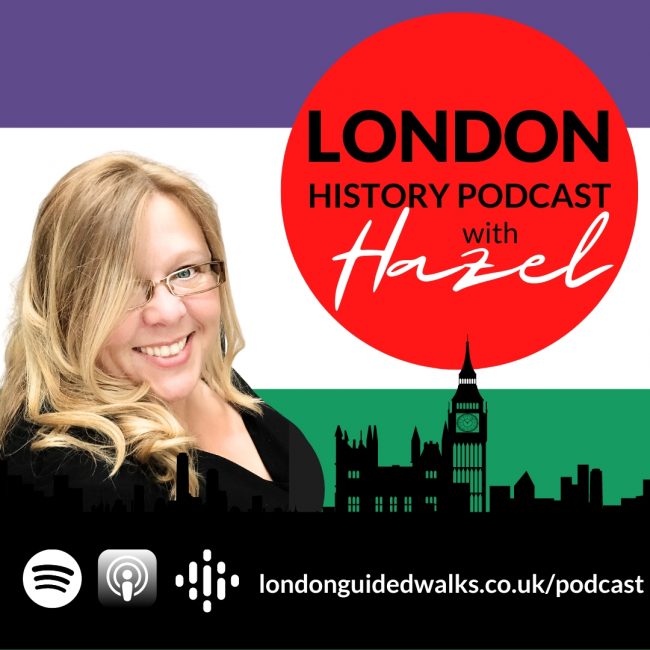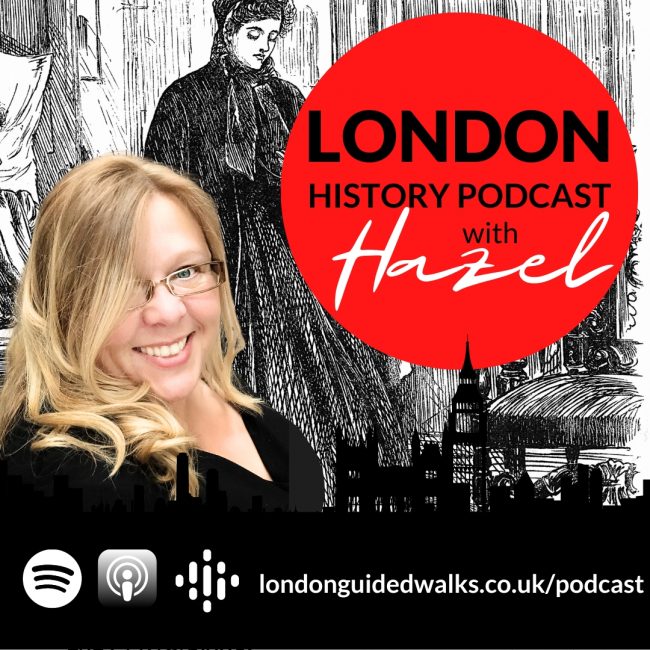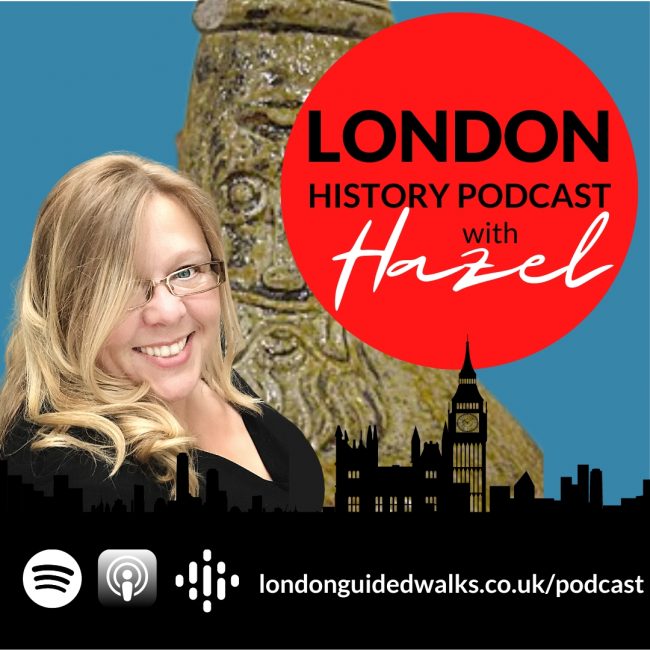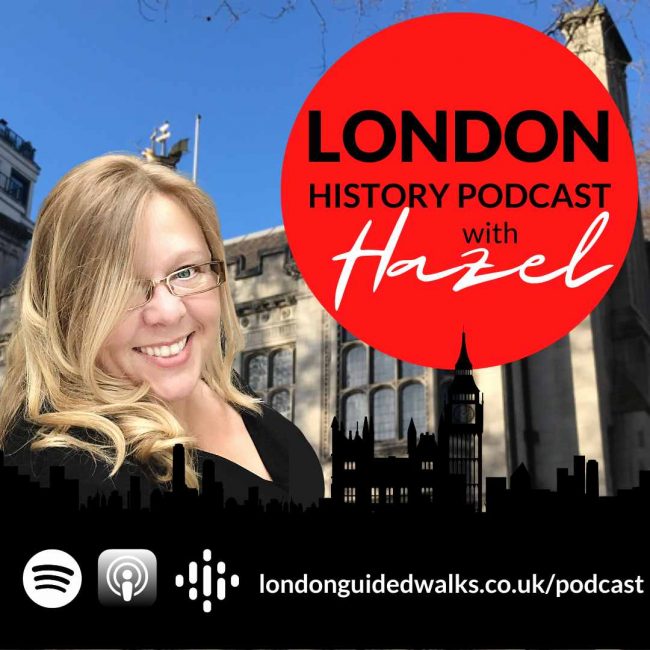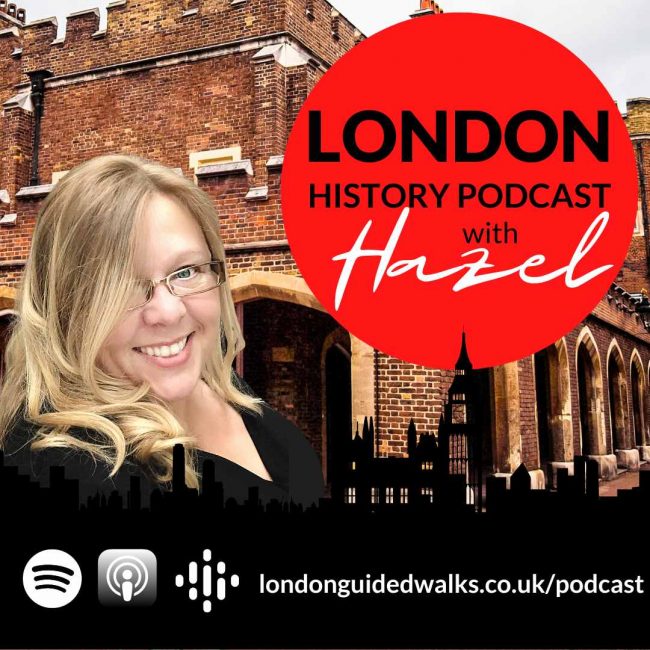The History of the Lord Mayor’s Show
Introduction
Today, we delve into a subject that encapsulates the full spectrum of London’s storied traditions and celebratory customs—the Lord Mayor’s Show. This remarkable event transcends the bounds of a typical parade. It embodies an historical celebration that has been part of the city’s annual rhythm for more than eight centuries.
The Lord Mayor’s Show stands as the world’s oldest and most cherished civic procession, an event that is noted for its extensive history, minimal rehearsal, and universal appeal. It represents a declaration of London’s autonomy, a spectacle that has roots in the medieval era, showcasing splendour and ceremony, while also serving as a contemporary homage to our collective resilience and the rich variety that defines our capital.
The esteemed office of the Lord Mayor of the City of London will soon be occupied by the 695th incumbent, Alderman Michael Mainelli from the Broad Street Ward. His ascension to this venerable role is marked by the Silent Ceremony, an event shrouded in time-honoured tradition, occurring on the eve of the Lord Mayor’s Show. Following this solemn occasion, on the 11th of November, Alderman Mainelli will partake in the grandeur of the Lord Mayor’s Show, a procession which will conclude with him affirming his allegiance to the Crown at Westminster. This role, pivotal to the City’s governance, not only involves presiding over the City of London Corporation but also entails serving as a global ambassador for the UK’s financial and professional services industry, symbolising the historical continuity and civic vitality of London.
Now, you may be wondering, why does London have a parade for a Lord Mayor? What’s so special about it that warrants such a grand event? Well, buckle up, history enthusiasts, because we’re taking a deep dive into the vibrant history and colourful traditions that make the Lord Mayor’s Show one of the most fascinating aspects of London’s cultural fabric.
In this episode, we’ll explore its medieval origins, how it has evolved through the ups and downs of British history, and what makes it so special and exciting even in today’s modern age.
So, whether you’re a Londoner who will stood in the November chill to catch a glimpse of the passing spectacle or someone who’s only heard about it, there’s something in this episode for you. Shall we begin?
Segment 1: Origins and Historical Significance
Before we discuss the parade’s iconic floats, the golden coach, and other modern elements lets discuss the historical cornerstone of this annual procession—the Magna Carta.
The Magna Carta: An Overview
Let’s begin by discussing the Magna Carta, a Latin term that translates to ‘The Great Charter.’ Drafted in 1215, the Magna Carta was a peace treaty between King John and his rebellious barons. It laid the groundwork for many constitutional principles we hold dear today, such as the concept of individual liberties and the rule of law. While most people know it for these broader democratic principles, it also has a unique tie to our topic today: the Lord Mayor’s Show.
Connection to the Lord Mayor’s Show
You might be wondering, ‘How does a medieval document about barons and a king relate to a festive parade?’ Well, tucked among the clauses of this monumental charter was a provision that allowed the City of London to elect its own mayor. There was just one condition: the newly elected Lord Mayor had to leave the safety of the City, travel along the Thames, and present himself at Westminster to swear loyalty to the crown.
A parade about the streets of the City of London in November may sound a bit strange but there is a reason:
The Lord Mayor’s Show, was historically synchronised with the Feast of St Simon and St Jude, falling on the 28th of October each year. This practice persisted until the pivotal year of 1751 when Britain made the momentous switch to the Gregorian Calendar, resulting in the omission of eleven days from September that year. To accommodate this change and maintain the proper duration of the mayoral year, the date of the Show shifted to the 9th of November, where it remained anchored for two centuries.
Previously, the Show’s scheduling on a fixed date meant that it could occur on any day of the week, which, by the mid-20th century, became increasingly problematic. The disruption to the City of London was considerable, exacerbated by the fact that the procession’s route would alter annually to traverse the Ward of the newly elected Lord Mayor.
It was in 1952 that the Corporation of London, alongside the Home Office, implemented a standard route for the procession. This decision undoubtedly brought solace to the Pageantmaster, among others, ensuring that the perennial dance between the parade and the evolving landscape of London’s streets and structures remained a harmonious one.
In a bid to streamline the event even further, 1959 marked the year it was decided that the Lord Mayor’s Show would henceforth take place on the second Saturday of November, thereby solidifying its date irrespective of the actual day. This change, however, intersects interestingly with the timing of Remembrance Sunday, observed on the Sunday nearest to Armistice Day on the 11th of November. As a result, the Show frequently unfolds on the eve of this solemn commemoration, though not invariably so.
This journey along the Thames became a significant event. Initially, it was a simple, solemn procession—a river pageant if you will—whose primary purpose was to show the Lord Mayor’s allegiance to the sovereign. However, the residents of London, never ones to shy away from a spectacle, saw this as an opportunity for celebration. Soon enough, this formal procession turned into a much-anticipated annual event, complete with musicians, entertainers, and public participation.
Unbroken Tradition
The Lord Mayor’s Show is a pageant of endurance and has witnessed the relentless march of time, standing firm through episodes of plague, the catastrophic Great Fire of London, and civic tumult such as the unrest preceding the 1830 procession. Not even a scathing 1867 critique in The Times, which speculated the demise of the show but not the banquet, could dampen its spirits.
This historic procession has gracefully transitioned from river to road as the capital evolved from scattered hamlets to the modern metropolis that stretches from the City of London to what was once the distant hamlet of Westminster.
The chronicle of the Lord Mayor’s Show is a patchwork of history and mythology, featuring ancient figures like Gog and Magog, and historical personalities such as the real Dick Whittington. It has been immortalised in art and literature and has adapted to the changing times, from World War I when it became a recruitment rally marred by inclement weather, to the frugal iterations during World War II, where, even amid the Blitz, the tradition endured with the Lord Mayor affirming his loyalty to the Crown.
This procession is not simply an annual event; it is the heartbeat of London’s resilience. Imagine the steadfastness required to maintain a tradition through plagues, the Great Fire, the turmoil of wars, and the modern complexities of the 21st century. In 1666, despite much of the city lying in smouldering ruins, the Lord Mayor’s Show went ahead, a beacon of stability in uncertain times.
Even when the bubonic plague gripped the city, the procession adapted but did not halt. War times saw the show stripped to its bare essentials, yet it continued unabated. This steadfast tradition underscores London’s unyielding spirit and is a testament to the city’s ability to maintain continuity through adversity.
In the unprecedented times of the 2020 Covid pandemic, for the first time since the mid-19th century, the Show was paused, reflecting the gravity of global health concerns. The last such disruption had been in 1852, in deference to the Duke of Wellington’s funeral.
Even though there is now set route, the evolution of London’s landscape necessitates occasional deviations to navigate construction and roadworks. These adjustments are not without precedent; as early as 1676, alterations were made to circumvent building materials for St Paul’s Cathedral.
Today, St Paul’s Cathedral still dominates the route to the Royal Courts, but contemporary changes in the Pageantmaster’s role are most evident in the heightened security measures—a far cry from 1761 when Prime Minister William Pitt was celebrated by the crowd with such fervour that they mobbed his carriage and kissed his horses.
Segment 2: Evolution Over the Centuries
In the early years following the Magna Carta in 1215, the Lord Mayor’s flotilla consisted primarily of barges, many decorated but without the extensive fanfare we see today. The Thames, after all, was the main highway of London at the time, and what better way to travel?
However, with the passage of time, the journey began to acquire additional layers of ceremony and pageantry. By the 16th century, the Thames procession had become something of a floating festival. It was a spectacle that even drew the attention of foreign visitors, one of whom, a certain Samuel Kiechel, described it in 1585 as full of ‘wonderful triumphs…with a peal of artillery.’ Yet, the waterborne procession was not immune to practical challenges. We can look back to 1711 when, according to records, the Lord Mayor ended up rather unceremoniously tipped into the river. After that, unsurprisingly, a shift towards land-based processions began to take hold.
The 19th century was a transformative period for the parade. The Industrial Revolution, along with the expansion of the British Empire, brought new technologies and cultural influences that began to shape the procession. Steamboats, for instance, made their debut, and in 1757, the first grand stand was erected. There were even elephants in the parade of 1882! Yes, elephants—a clear sign of a parade that is continually reinventing itself.
As we moved into the 20th century, the parade saw further modernisation but also had to contend with the considerable challenges posed by two World Wars. The procession continued in some form even during these troubled times, as if London were making the statement that tradition and resilience could coexist even in the darkest hours.
In the post-war era, the parade has only continued to grow in scale and diversity. Today, it includes a stunning array of participants, from military bands to modern floats, representing charities, London boroughs, and various institutions. The flotilla tradition has also been revived in recent years, adding another layer to this ever-evolving spectacle.
What is particularly noteworthy is how the Lord Mayor’s Show has expanded to become a platform for cultural expression and inclusivity. It reflects London’s cosmopolitan makeup, featuring groups ranging from Bhangra dancers to Caribbean steel bands, all marching alongside traditional City of London institutions.
London itself has always been a melting pot of cultures, ideas, and peoples. The Lord Mayor’s Show has, in many ways, mirrored this diversity over the years. From its early beginnings as a simple oath of allegiance, the parade has expanded to include a vast array of communities and organisations, each contributing to the fabric of this magnificent event.
Let’s talk about inclusion, shall we? In the past, the event was primarily a display of power and allegiance between the City of London and the monarchy. Over time, however, the involvement of various guilds and livery companies added a new dimension to the parade. These organisations played a pivotal role in shaping trade and industry in London, and their inclusion in the Lord Mayor’s Show made it a true reflection of the city’s economic might.
As the British Empire grew and London found itself at the centre of world commerce, the Lord Mayor’s Show also took on an international flavour. In more recent years, we’ve seen representation from diverse communities, reflecting the multicultural tapestry of London itself. Caribbean, Indian, and Chinese community groups have participated, adding vibrant colours, delightful music, and delectable aromas to the proceedings. It’s an evolving tableau that embraces the cultural richness of the city.
Not only communities, but various organisations have also joined in, ranging from charities to educational institutions, from military units to sports clubs. This has democratised the event in a sense, enabling it to be not just a procession for the elite but a celebration that many facets of society can engage in and enjoy.
And let’s not forget, the parade also has had its share of female Lord Mayors. The first woman to hold the post was Dame Mary Donaldson, who took on the role in 1983. Her participation in the Lord Mayor’s Show marked a significant step towards gender inclusivity in an event that was historically male-dominated. And since then, more women have donned the tricorn hat and stepped into the golden carriage, reflecting changing societal norms.
In essence, the Lord Mayor’s Show is no longer just a static pageant but a dynamic celebration of London’s multifaceted identity. It is a testament to how the city, and indeed the event itself, has been able to adapt and change, just as the River Thames, the original stage for the event, winds its way through London, ever-changing but enduring.
But let’s move on to some key memorable moments, shall we?
In 1800, the Lord Mayor’s Show celebrated the nation’s victory over the French in the Battle of the Nile, a significant naval confrontation between the British Royal Navy and the Navy of the French Republic. On that occasion, an elaborate float representing a ship named L’Orient was part of the procession, celebrating Admiral Nelson’s victory.
In the Victorian era, the event saw remarkable innovations in terms of floats and pageantry. Industrialisation was the theme of the day, and businesses were keen to showcase their machines, products, and technological marvels. Imagine steam engines slowly making their way through the narrow lanes of the City of London!
Another significant shift was in 1952 when Winston Churchill was present as Lord Mayor Sir Leslie Boyce laid a wreath at the Cenotaph to honour the war dead, a sombre moment that showed how the event could also serve as a platform for national remembrance.
In 2012, the Lord Mayor’s Show became more inclusive than ever. It featured representatives from the LGBTQ+ community, a milestone that reflected the changing face of London and its commitment to diversity and inclusion.
One can’t forget the 2018 parade, which was led for the first time by a woman in 800 years. Yes, you heard that right, 800 years! Lord Mayor Dame Fiona Woolf took on the role, highlighting the slow but significant strides being made towards gender equality in London’s highest offices.
So, as you can see, the Lord Mayor’s Show isn’t just about a newly elected Mayor and a procession; it’s a living, breathing embodiment of London’s history, culture, and social change. It has evolved from a simple display of fealty to the Crown into a vibrant spectacle that can mirror societal shifts and carry political, cultural, and even emotional weight.
Segment 3: Iconic Elements and Traditions
What are the iconic elements and traditions that make the Lord Mayor’s Show an event like no other?
First up: Giants!
As the Lord Mayor’s procession unfurls through the streets of London, leading the cavalcade are two imposing yet majestic wicker figures known as Gog and Magog, the revered protectors of the City. Their inclusion in the Lord Mayor’s Show is a custom that harks back to the time of King Henry V.
These mythical colossi find their roots in the ‘Matter of Britain’, the rich tapestry of mediaeval legends intertwined with the early monarchs of these isles. The narrative takes us back to a time when Diocletian, the Roman Emperor, had thirty-three unruly daughters. In a tale of treachery, these daughters, wed to thirty-three husbands, would enact a gruesome plot led by their eldest, Alba, slaughtering their spouses as they slept.
Their heinous crime saw them cast out to sea, eventually reaching the shores of a grand isle that would bear the name Albion, after the scheming Alba. There, consorting with demons, they gave rise to a progeny of giants who roamed the untamed, storm-lashed landscapes.
Enter Brutus, a descendant of the Trojan hero Aeneas, who, after a series of adventures and misfortunes, landed upon the same isles. Naming them Britain, after himself, he established his dominion. Alongside him was the valiant warrior Corineus, who would engage the fearsome giant Gogmagog in combat, ultimately vanquishing him by throwing him off a cliff known thereafter as ‘The Giant’s Leap’. In honour of his victory, Corineus received Cornwall as his domain, while Brutus ventured east to found what would become known as London.
These tales, largely mythological yet enduringly influential, were chronicled by Geoffrey of Monmouth in his 12th-century work ‘Historia Regum Britanniae’. This text sought to connect the Celtic monarchs to the Homeric epics and the legendary King Arthur. Despite anachronisms and historical liberties—blending ancient Troy’s fall with Diocletian’s era, and repurposing the name Gogmagog from biblical lore—these stories were taken as historical fact for generations, shaping the self-image and pageantry of London’s governance.
The tradition of venerating giants as original settlers or founders is not unique to Britain. Across cultures, it is commonplace to mythologise the earliest inhabitants as beings of immense stature, their physical prowess magnified as their exploits transcend into legend. The giants of old were not monstrous in appearance; rather, they are embellished recollections of formidable figures from a bygone epoch of strength and simplicity.
By the Middle Ages, the practice of parading effigies at festivals had become widespread throughout England and Europe, with mythological giants frequently amongst their number.
An alternate strand of the Gog and Magog legend posits that they were the last surviving offspring of Diocletian’s daughters, bound and positioned at the gates of a palace at the site of the present Guildhall. Whether as prisoners or protectors, by the time of Henry V, carved figures of giants were stationed at Guildhall’s gates. In the 17th century, these effigies began to feature prominently in the Lord Mayor’s Show, with the Pageantmaster referencing them as Corineus and Gogmagog.
The Lord Mayor’s Day has seen various representations of these guardians. In 1672, following the devastation of the Great Fire of London, new effigies were created, only to succumb to vermin due to their construction from wicker and pasteboard. In 1708, wood carvings by Captain Richard Saunders took their place, enduring for over two centuries before succumbing to the Blitz. The current statues, crafted by David Evans in 1953 and gifted by Alderman Sir George Wilkinson, are a testament to London’s resilience.
Today, Gog and Magog stand as powerful symbols linking the City’s vibrant modernity to its mythic past. The phoenix on Magog’s shield, representing rebirth from ashes, encapsulates the City’s capacity for renewal. These effigies echo the sentiments of Thomas Boreman, who eloquently summarised Londoners’ perspective: like the formidable giants of yore, the City of London pledges to staunchly safeguard the honour and freedoms of both the nation and the metropolis itself, towering in its commitment as surely as Gog and Magog loom large over the ordinary stature of humankind.
Next, let’s talk about the vintage cars and other vehicular curiosities that have graced the parade route. These aren’t just any cars; many are historical artifacts on wheels, each telling its own story. For automotive enthusiasts and historians alike, this part of the parade offers a timeline of motorised transport, and, of course, it adds a layer of nostalgia that’s quite charming.
Now, no discussion of the Lord Mayor’s Show would be complete without mentioning the floats. They range from the highly elaborate to the endearingly simple, but all serve as platforms for various companies, charities, and community groups to showcase their causes, achievements, or simply their creativity. With themes as varied as the organisations they represent, the floats provide a colourful tapestry of London’s social and economic fabric.
Ah, but what would a parade be without music? Military marching bands play a significant role in the festivities. Their synchronised steps and resounding melodies not only provide a soundtrack for the procession but also lend a certain ceremonial gravitas to the event. These bands often represent different regiments and divisions, paying homage to the country’s military history and the service of its members. And, let’s be honest, they’re incredibly entertaining to watch.
Let’s discuss the role of the Lord Mayor of London, not to be confused with the Mayor of London—a different role entirely. The Lord Mayor is a position that dates back centuries, with the primary responsibility of representing the City of London, including its businesses and residents. The Lord Mayor is also the chancellor of the City University of London, and it’s quite a demanding role that has evolved over time. Still, the essence of it has remained remarkably consistent: to serve as a steward of the city’s long-standing traditions and as an ambassador to the rest of the world.
Ah, the golden coach! If you’ve ever had the pleasure of witnessing the Lord Mayor’s Show, it’s almost impossible to miss this magnificent carriage. First used in 1757, the coach is an epitome of opulence, with its intricate carvings and lavish gold leaf ornamentation. Believe it or not, the coach weighs nearly three tonnes and requires six horses to pull it. This iconic vehicle carries the Lord Mayor from the Guildhall to the Royal Courts of Justice and back again, in a procession that embodies both grandeur and tradition.
Now, let’s turn our attention to some of the most interesting ceremonial artefacts associated with the Lord Mayor’s role: the ceremonial sword and mace. The sword, often referred to as the ‘Sword of State,’ symbolises the Lord Mayor’s authority within the Square Mile—that’s the City of London for those who might not be familiar. The mace, on the other hand, represents the royal authority by which the Lord Mayor’s office operates. Both of these items are displayed prominently during the parade, and they’re not just for show. They encapsulate the weight of tradition and the gravitas of the roles and responsibilities bestowed upon the Lord Mayor.
It’s these details—the grandiosity of the golden coach, the symbolism of the sword and mace, and the overarching role of the Lord Mayor—that weave together to create the intricate tapestry that is the Lord Mayor’s Show. They serve as touchstones that link us back to London’s rich history, even as the city continues to evolve and modernise.
In this segment, we’ll focus on some of the show’s most iconic elements and traditions, including one that I find particularly intriguing—the rather curious practice of weighing the Lord Mayor. So, sit back and allow me to regale you with tales that make this parade unlike any other.
The Lord Mayor’s Golden Coach
Let’s begin with one of the most eye-catching elements—the Lord Mayor’s golden coach. This magnificent vehicle was built in 1757 and has been used in every parade since. Designed by Sir Robert Taylor and crafted by Joseph Berry, it’s a masterpiece of artistry, boasting intricate carvings and gilded detailing. This coach serves not just as a mode of transportation but as a moving symbol of the grandeur and continuity of the City of London’s governance.
Ceremonial Sword and Mace
Next, we have the ceremonial sword and mace, both vital aspects of the show. The sword, often mistaken as just a beautiful artefact, actually has a deep-rooted significance. It symbolises the Lord Mayor’s power and jurisdiction within the square mile of the City. The mace, similarly, is a symbol of royal authority. Carried before the Lord Mayor, it’s a vivid reminder of the time-honoured relationship between the monarchy and the City of London.
The Weighing of the Lord Mayor
Now, let’s delve into one of the more idiosyncratic traditions—weighing the Lord Mayor. At first blush, this may seem like a rather odd or even intrusive ceremony, but it comes with historical underpinnings. The Lord Mayor is weighed at the beginning and end of their term. But why, you might ask? Well, the practice dates back to the notion that if the Lord Mayor gained weight during their time in office, it could be a sign that they had been indulging in the finer things at the taxpayers’ expense. So, in a way, this tradition serves as a quirky but symbolic form of public accountability.
The Flotilla
The flotilla is a spectacular aquatic component of the Lord Mayor’s Show. This tradition harks back to the original form of the parade, which was a river pageant on the Thames. Though the procession is now largely land-based, the flotilla continues to be a nod to the event’s historical roots. The boats are often decorated in grand style, and the sight of them proceeding along the Thames adds an extra layer of theatricality to the day’s proceedings.
Segment 4: Cultural Impact and Modern Interpretations
Now, let’s pivot slightly and examine the broader cultural and economic impacts of this annual spectacle on London and indeed, the U.K. as a whole.
Now, it’s easy to think of the Lord Mayor’s Show as just a grand parade, a bit of pomp and ceremony that’s largely for show. But if we scratch beneath the surface, there’s so much more to it. It’s not merely a London-centric affair; it has nationwide implications.
Economically speaking, the Lord Mayor’s Show has been a boon for London. Every year, the event draws in tens of thousands of spectators to the heart of the city. Hotels, restaurants, cafes, and shops in the vicinity see a considerable uptick in business. The event itself provides temporary jobs and contracts, from float design to costume making. There’s an entire logistical operation behind the scenes, and all of these contribute to the local economy.
It also provides a global stage for various sectors in the U.K. economy. Floats from charities, military organisations, and financial corporations get the chance to represent themselves in the parade. It serves as an excellent marketing platform, heightening the profile of various entities that participate. The show broadcasts on television and is streamed online, capturing a worldwide audience and putting British culture and innovation front and centre.
Culturally, the Lord Mayor’s Show has far-reaching significance as well. The inclusion of different communities, organisations, and causes reflects Britain’s multicultural society. The parade has, over the years, incorporated participants from different ethnic backgrounds, showcased LGBTQ+ groups, and highlighted charitable and environmental causes.
Modern interpretations of the parade have not shied away from using digital mediums to engage with a younger and global audience. Social media channels buzz with updates, live feeds, and interactive features, ensuring that even those who can’t make it to the streets of London can still be part of this historic celebration. This digital evolution ensures that the parade remains relevant and engaging to new generations.
And let’s not forget the parade’s role in charity and public awareness. The Lord Mayor’s Appeal, for instance, leverages the event’s high profile to raise funds for various charitable initiatives. In essence, the Lord Mayor’s Show serves as a platform for advocacy and social responsibility, amplifying voices that might otherwise go unheard.
To summarise, the cultural and economic tentacles of the Lord Mayor’s Show reach far beyond the procession itself. It’s an event that has both direct and indirect impacts on London and the U.K., functioning as a prism through which we can view the nation’s complexities and diversities.
turn our attention to the cultural impact of this illustrious parade and examine how it has adapted to modern times. So, let’s delve in, shall we?
Social Consciousness and Awareness Campaigns
In addition to technological innovations, the parade has also been a platform for social consciousness. Environmental sustainability is now a recurring theme, with many floats being designed with recycled or sustainable materials. And in terms of public awareness, the Lord Mayor’s Show has increasingly become a stage for campaigns ranging from public health initiatives to drives supporting local charities. The fusion of the traditional with the current social zeitgeist gives the parade a unique resonance that is both timely and timeless.
Let’s shift our focus to another crucial facet of this grand event: its significant role in charity work and public awareness campaigns.
The office of the Lord Mayor itself is deeply tied to charitable endeavours. The Lord Mayor’s Appeal, for instance, is an annual fundraising campaign led by the incumbent Lord Mayor, and the Show provides an excellent platform to highlight the year’s chosen charities.
The causes supported are varied, ranging from mental health initiatives to educational programmes and even environmental conservation. Floats dedicated to these causes often make their way through the procession, each designed to engage the public in a meaningful way. Whether it’s a float made entirely of recycled materials to highlight sustainability or a tableau depicting London’s historical efforts to combat poverty, these elements within the parade provide not just visual delight but also food for thought.
And it’s not just about the Lord Mayor’s chosen charities. The Show allows for an eclectic mix of organisations to be represented, both commercial and not-for-profit. This means charities that may not have the enormous budgets for public awareness can bask in the same spotlight, sharing the stage with venerable institutions like the Bank of England or the Worshipful Companies. It’s a moment for lesser-known but equally important initiatives to grab public attention.
What’s more, the media coverage of the event amplifies these messages exponentially. With television broadcasts and increasingly, online streaming, the reach of the Lord Mayor’s Show is now global. This allows the charitable messages to extend far beyond the physical boundaries of the parade, inspiring change and generosity on an international scale.
In recent years, social media has also played a part in broadening the impact of these charitable messages. Hashtags, interactive online events, and even virtual reality experiences related to the Show enable engagement from people who might be continents away but are drawn into the cause thanks to modern technology.
Segment 5: Captured in Art
The Lord Mayor’s Show, a subject immortalised in both art and literature, has been depicted by numerous artists through the ages, generating a plethora of paintings and drawings too extensive to enumerate comprehensively. However, two particularly notable pieces emerged in the year 1747, crafted by the pre-eminent artists of that era, Canaletto and Hogarth, each offering a unique perspective that epitomises the zenith of eighteenth-century English and Italian artistic prowess.
Canaletto’s representation is but one of five he created of the Show, capturing the grandeur of the eighteen-oared State Barge along with the twelve-oared barges belonging to various Livery companies. Amidst this aquatic procession, three sailing ships hoist the Union Jack, and the air is streaked with trails of smoke—a vivid testament to recent salutes fired in honour. His canvas presents an almost dreamlike vision of London, a panorama composed from an elevated vantage point above the Thames, amalgamating two distinct viewpoints into one. The resulting breadth is so expansive that it demands more than a mere moment’s glance. The azure of Canaletto’s skies, a tribute to his Venetian roots, forms the backdrop against which the tapestry of London’s architecture is arrayed—Lambeth Palace, Westminster Abbey, and Westminster Hall among them. Predominant in this architectural ensemble is the yet-to-be-opened Westminster Bridge, depicted complete with the envisaged, yet never actualised, statues of the river gods Thames and Isis.
In stark contrast, Hogarth eschewed what he disdainfully referred to as “phizmongering,” or the embellishment of reality. His canvas was London in its rawest form—portraying both its splendour and squalor with equal candour. His ‘Industry and Idleness’ series serves as a moral compass, juxtaposing the ultimate fates of the Wise and the Wasteful. The narrative of two apprentices, whose paths diverge starkly, unfolds across the series: the Idle Apprentice meets his end at Tyburn, whereas the Industrious one achieves the zenith of civic success by marrying his master’s daughter and attaining the esteemed position of Lord Mayor. A particularly striking engraving from the series features the Industrious Apprentice, bathed in the admiration of the populous during the Lord Mayor’s Day procession, observed from on high by royalty. His mode of transport, a hired coach, became the norm following a mishap in 1711, predating the inauguration of the splendid Lord Mayor’s coach built in 1757.
To round off this cultural retrospective, we have the diarist Samuel Pepys, who, in 1660, offered a candid review of the Show. Despite his general grumblings—on everything but the company of charming ladies and the excellent wine—his reflections add a personal and intimate layer to our historical understanding of the Show’s reception in its early days. Pepys’s experiences, mingled with his discerning tastes, provide us with a visceral sense of the pageantry and the amb
Segment 6: What to Look Forward To
We’ve travelled through the annals of time, witnessing its grandeur, its symbolism, and its evolution. But what about the future of this beloved tradition? What can we expect in the coming years, and how might you, our dear listeners, become part of this vibrant tapestry of London life? Let’s delve into it.
Upcoming Changes and Special Features
Firstly, let’s talk about the exciting new changes and special features that we can anticipate for the next Lord Mayor’s Show. While the core traditions remain steadfast, every year brings its own unique flair to the parade. Recently, we’ve seen an increased focus on sustainability. From eco-friendly floats to educational segments about environmental responsibility, it’s clear that the Lord Mayor’s Show is aligning itself with modern concerns without forsaking its historical roots.
In addition, plans are in the works to further diversify the procession, including increased participation from various communities across London, aiming for a fuller representation of the city’s glorious tapestry of cultures. For art enthusiasts, there are talks of incorporating more contemporary and interactive art installations along the parade route, offering a blend of the traditional and the modern that is sure to captivate attendees of all ages.
How to Participate or View the Parade
Now, let’s move on to how you can be a part of this grand spectacle. If you’re based in London or planning a visit around the time of the Lord Mayor’s Show, watching it in person is an unparalleled experience. The parade covers a three-mile-long route and offers numerous vantage points. To secure a good spot, it’s advisable to arrive at least an hour before the procession starts. Take note: some areas may require tickets, so it’s worth checking the official Lord Mayor’s Show website for details.
However, if you can’t make it to London, fret not. The parade is extensively covered by various media outlets. Traditionally, the BBC broadcasts the event live, offering detailed commentary and interviews, giving viewers a more contextual experience. In recent years, live streaming options have also become available, making it easier for global audiences to tune in.
If you’re feeling particularly enthusiastic, why not consider participating in the parade? Various community groups, schools, and local businesses often take part. The application process is competitive, but being a part of this living history is an experience like no other.
Conclusion for the Segment
And with that, let’s wrap up this segment.
At its core, the Lord Mayor’s Show is about more than just a procession or pageantry; it’s a celebration of civic responsibility, community spirit, and, most significantly, the continuity of tradition in an ever-changing world. As we’ve seen, the Show’s metamorphosis over the years parallels London’s own transformation—sometimes gradual, other times revolutionary—but always pushing towards the future without forgetting its roots.
Thank you for joining me on this engrossing journey through one of London’s most cherished traditions. The Lord Mayor’s Show encapsulates so much of what makes this city extraordinary—a blend of the old and the new, a testament to resilience, and a symbol of collective celebration. It truly is a must-see event for anyone interested in experiencing the intricate interplay of history, culture, and modern life in London.

